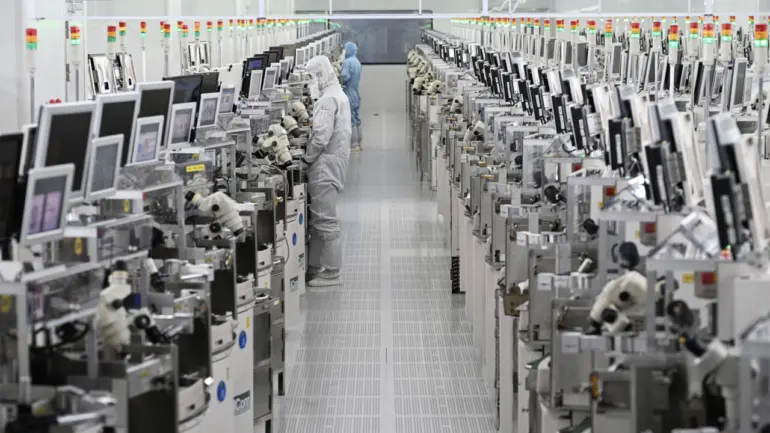Shoppers could face higher prices for phones, laptops, and other everyday gadgets next year, manufacturers and analysts warn, as AI data centres gobble up the memory chips traditionally used in consumer electronics.
Tech giants are pouring vast sums into building the hardware that powers artificial intelligence systems such as ChatGPT, creating an insatiable appetite for memory components. That surge in demand is straining a supply chain that chipmakers deliberately keep tight to avoid profit-sapping price drops, experts say.
Pressure on memory supplies in 2026 “will be far greater than this year”, Lu Weibing, president of Chinese electronics giant Xiaomi, warned this week. “Everyone will likely observe that retail prices for products will see a significant increase,” he said on an earnings call.
William Keating, head of semiconductor consultancy Ingenuity, expects the same outcome. “All companies that manufacture PCs, smartphones, servers, etc., will be impacted by the shortage… End result: consumers will pay more,” he told AFP.
At the heart of the squeeze are DRAM chips and NAND storage — essential components in phones, laptops, and other gadgets, but also critical for processing the enormous volumes of data required by generative AI. Their booming use in AI servers is driving up memory chip prices and delivering windfall revenues to producers such as Samsung and SK hynix in South Korea, and Micron and SanDisk in the United States.
“AI-related server demand keeps growing, and this demand significantly exceeds industry supply,” Samsung Electronics executive Kim Jae-june said last month.
‘Keep prices high’
Samsung announced Sunday that it will build a new semiconductor plant in South Korea to meet soaring demand, while SK hynix recently posted its best-ever quarterly results, “driven by the full-scale rise in prices of DRAM and NAND”.
Industry researcher TrendForce has cut its 2026 production forecasts for smartphones and notebook computers, warning that “the memory industry has begun a robust upward pricing cycle” that is forcing brands to pass higher costs on to consumers.
Cars may also see some impact, though Keating noted that a smaller share of automotive components rely on high-end memory chips. Even so, China’s largest contract chipmaker, SMIC, said last week that customers have become hesitant to place orders amid uncertainty over how many devices the industry will ultimately be able to supply.
Analysts say the shortage stems from two forces: stronger-than-expected AI-driven demand and years of aggressive cuts in capital spending by memory makers. “Keep capacity tight, keep prices high is basically their mantra,” Keating said. “They’ve done this deliberately to ensure there’s no repeat of the last memory price collapse, which cost the industry tens of billions.”
Price surges for memory chips “are huge and the trend is continuing,” added Stephen Wu, founder of investment fund Carthage Capital. “Consumers and enterprises should expect higher memory prices, longer lead times, and more take-or-pay contracts through at least early 2026,” he said.
AFP


